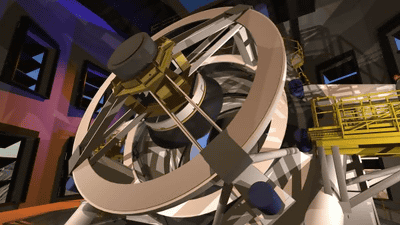The world's largest radio telescope at the Arecibo Observatory will be dismantled after two major accidents in three months.

by
The Arecibo Observatory 's radio telescope in Puerto Rico is one of the largest radio telescopes in the world with a reflective surface of 305 m in diameter and has long played an important role in astronomy research. However, since this radio telescope was built in 1963, it is aging, and the National Science Foundation (NSF) announced that it had two major accidents only between August and November 2020. We have decided to dismantle the radio telescope.
NSF begins planning for decommissioning of Arecibo Observatory's 305-meter telescope due to safety concerns | NSF --National Science Foundation
https://www.nsf.gov/news/news_summ.jsp?cntn_id=301674
Famed Arecibo telescope, on the brink of collapse, will be dismantled | Science | AAAS
https://www.sciencemag.org/news/2020/11/famed-arecibo-telescope-brink-collapse-will-be-dismantled
Facing collapse, the famed Arecibo Observatory will be demolished --The Verge
https://www.theverge.com/2020/11/19/21575025/arecibo-observatory-puerto-rico-decommission-structural-collapse-cable-break
The Arecibo Observatory has been used for various extraterrestrial exploration projects, including the transmission of the first radio signal ' Arecibo Message ' targeting extraterrestrial life forms, and has also become the stage for games and movies. It was. The world's largest radio telescope, which Arecibo Observatory is proud of, suffered from budget cuts and damage due to direct hits from hurricanes in the 21st century, but it was said that it was still in operation as an active radio telescope as of 2020. thing.
However, on August 10, 2020, an accident occurred in which the steel auxiliary cable that supports the secondary mirror of the radio telescope was cut and collided with the reflective surface of the primary mirror. The reflective surface, which is an important part of the radio telescope, broke over 30m, causing the operation to be temporarily suspended.
Repair work for this accident was scheduled to take place in December 2020, but on November 6, just three months after the accident, another accident occurred with the radio telescope. It is reported that the main cable supporting the secondary mirror was cut and dropped, damaging the reflective surface and other cables.
The world's largest radio telescope causes two major accidents in just three months --GIGAZINE

The Arecibo Observatory has applied for a subsidy from NSF and is planning to restart it, but when NSF examined the results of multiple surveys by engineering companies, repairing the radio telescope poses a risk to facility workers. Turns out to be. NSF has announced that it will abandon the repair of the radio telescope, which has been in use for 57 years, and dismantle it.
The aging of the radio telescope is serious, and cables other than those that have already been cut are still exposed to disasters such as hurricanes and harsh climates, so there is a danger that the structure of the radio telescope will not be supported. In the worst case, the suspended secondary mirror may collide with the reflecting surface, or the tower supporting the secondary mirror may collapse and damage the surrounding buildings.
Regarding the decision to dismantle the radio telescope, NSF Director Sethuraman Panchanathan commented, 'Unfortunately, this decision is necessary because the NSF prioritizes the safety of workers, observatory staff and visitors.' 'Engineers advised that the radio telescope would self-destruct in the near future,' said Ralph Gaume, director of astronomical divisions at NSF. 'Radio telescopes are at risk of unexpected and uncontrollable collapse. The abolition that has been done gives us the opportunity to preserve the valuable assets of the Astronomical Observatory. '
Within a few weeks of the announcement, a plan to dismantle the radio telescope will be drafted, and it will be put into practice after ensuring the safety of the surroundings. Not all facilities at Arecibo Observatory will be dismantled, observation facilities other than the radio telescope and buildings such as the visitor center will be preserved, and analysis of the data collected by the radio telescope will continue for the time being.
This decision is disappointing for many scientists who have relied on the Arecibo Observatory for many years. However, Ashley Zauderer, who is in charge of the Arecibo Observatory project at the NSF, argues that this decision is the best decision for those who work at the observatory. 'The observatory's heart and soul are not the radio telescopes, but the people who work there. NSF has prioritized true treasures,' he said.

Related Posts:
in Science, Posted by log1h_ik






